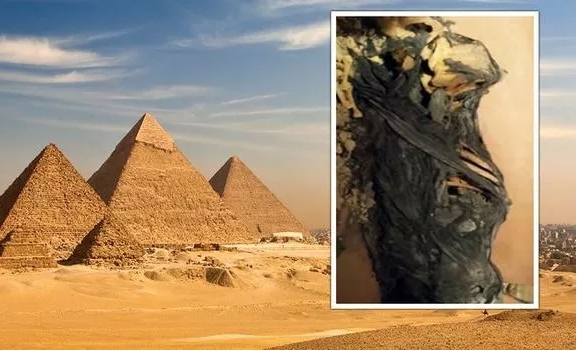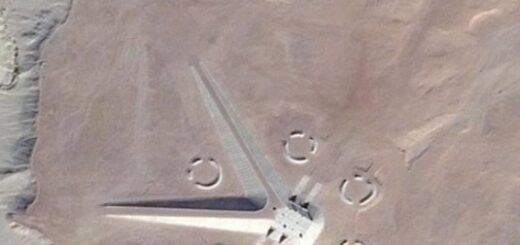Egypt archaeologist ‘scared’ after bizarre 4,000-year-old mummy discovery baffled experts

EGYPT archaeologists uncovered a “scary” mummy believed to be almost 4,000 years old while excavating a burial chamber – and the remains left bone experts baffled.
The discovery was made by archaeologist Dr Martina Bardonova in Aswan, a city with historical importance that sits on the Nile. She was leading a Spanish research team investigating the reign of Hatshepsut, the first female ruler of Egypt when they discovered an unopened tomb in the cliffs. Channel 4’s “Secrets of Egypt’s Valley of the Kings” revealed how experts delicately excavated the outside of the tomb before they broke in, making an incredible development despite treacherous conditions.
The narrator said: “Martina’s found a coffin that’s remained hidden from looters.
“But first she has to get to the tomb – a Saharan sandstorm is blowing in from the south.
“As the sandstorm reaches gale force, even the 200-metre journey to the burial is a battle.
“In the shelter of the tomb the team can now carefully remove the lid of the terracotta coffin.
“They are about to find out whether anything has survived after nearly 4,000 years.”
As the expert attempted to remove the coffin, she appeared shaken by its appearance.
She said: “It’s very heavy, but be careful, it looks very scary.
“It’s like a scary movie, if this mummy is moving I’m going as fast as [I] can.
“It’s a very ugly mummy – it’s not really a mummy – just that it was simply put here, but not well bandaged.”
The series detailed how more experts were brought in to get a better understanding of the find.
It added: “The terracotta coffin contains no mummy but a skeleton shrouded in black material.
“Bone expert Dr Miguel Cecilio Botella Lopez has arrived to analyse the skeleton.
“They hope to find out who this person was and how they prepared for the afterlife.”
After he took off the bandages, Dr Botella revealed to the team it was a woman.
He added: “I’m sure it’s a woman. The age, I’m not sure, but more than 70.”
The team were left baffled by his estimate as people in ancient Egypt did not grow very old.
Very high infant death rates due to high risks of infections resulted in a low average life expectancy.
However, those who survived childhood lived for slightly longer.
Dr Bardonova continued in 2019: “The average age life expectancy was about 25, but far more women died during childbirth.
“When you have someone who is over 70, I don’t want to say I’m surprised, but it’s nice to know, it’s nice to get someone who’s really old.”
Tutankhamun is one of the most famous of all ancient Egyptians pharaohs, but he is believed to have only lived to 18.
Human remains are primary sources used to calculate age and life-expectancy as there are few written and visual archives.
Occasionally the age at death can be found as an inscription part of the mummy label attached to the bodies.
Secondary evidence of ageing includes legal documents where they sometimes have referred to the person as “aged”.
In ancient Egypt, elders were defined as older adults who were no longer able to contribute labour.
Egyptian writings indicate a social norm of respecting older people, but there was no special position in society for the elderly.



 Creators of mankind
Creators of mankind Description of “Tall white aliens”
Description of “Tall white aliens” Where they came from?
Where they came from? About hostile civilizations
About hostile civilizations The war for the Earth
The war for the Earth “Tall white aliens” about eternal life
“Tall white aliens” about eternal life Video: “Nordic aliens”
Video: “Nordic aliens” Aliens
Aliens Alien encounters
Alien encounters The aliens base
The aliens base UFO
UFO Technology UFO
Technology UFO Underground civilization
Underground civilization Ancient alien artifacts
Ancient alien artifacts Military and UFO
Military and UFO Mysteries and hypotheses
Mysteries and hypotheses Scientific facts
Scientific facts


















